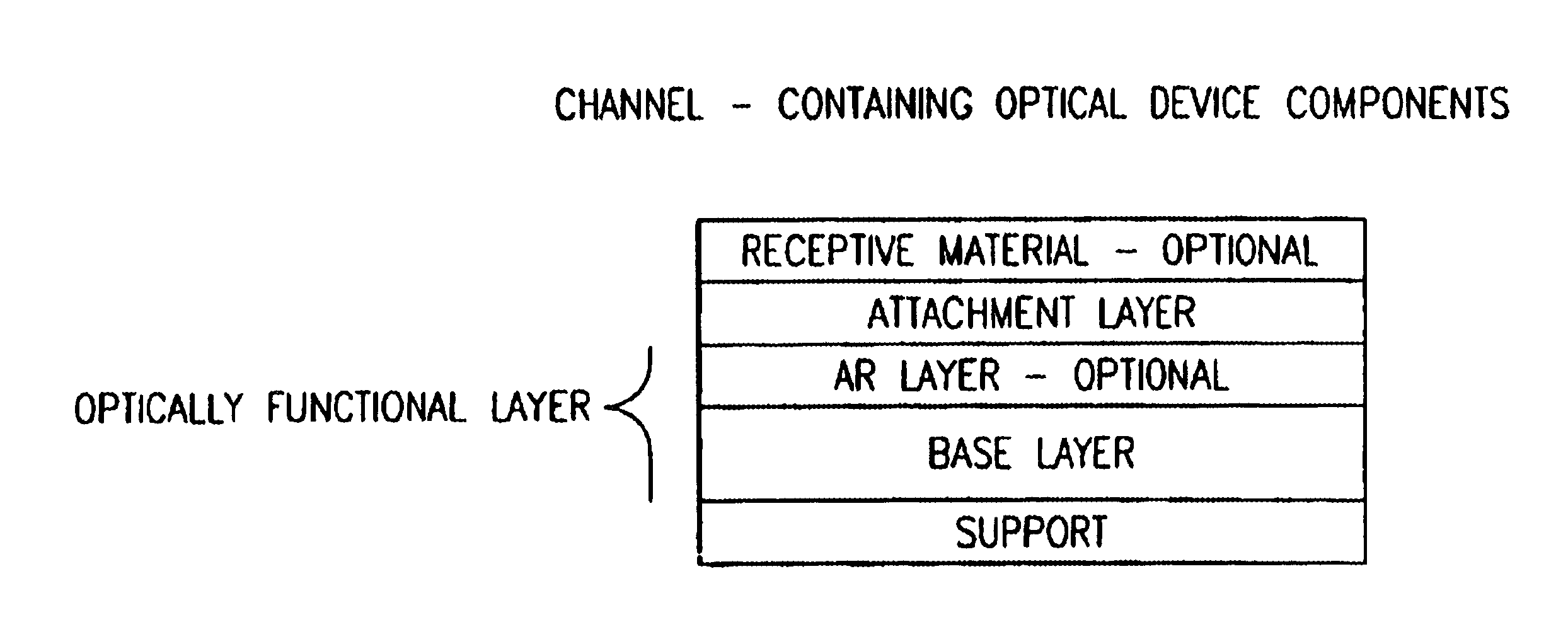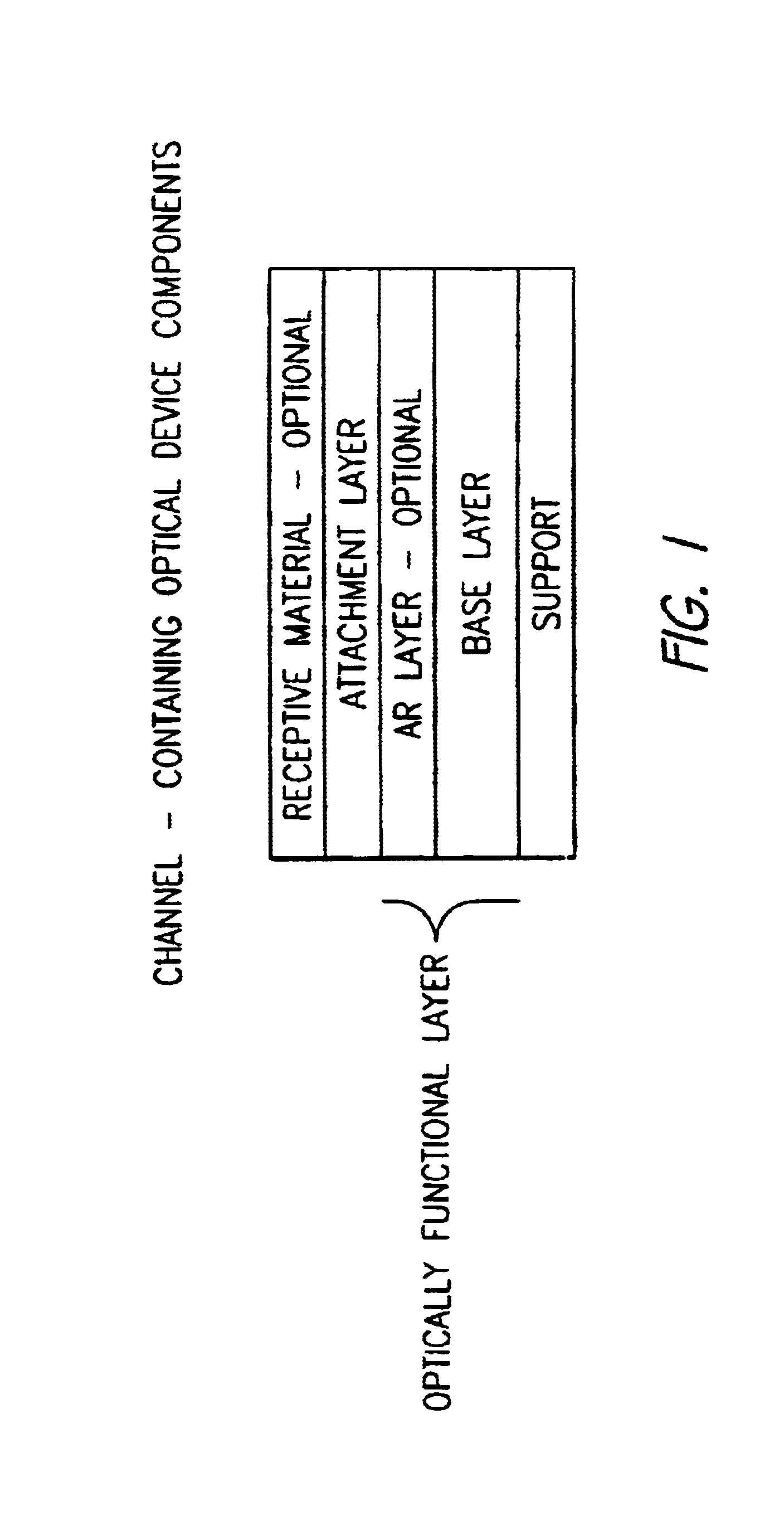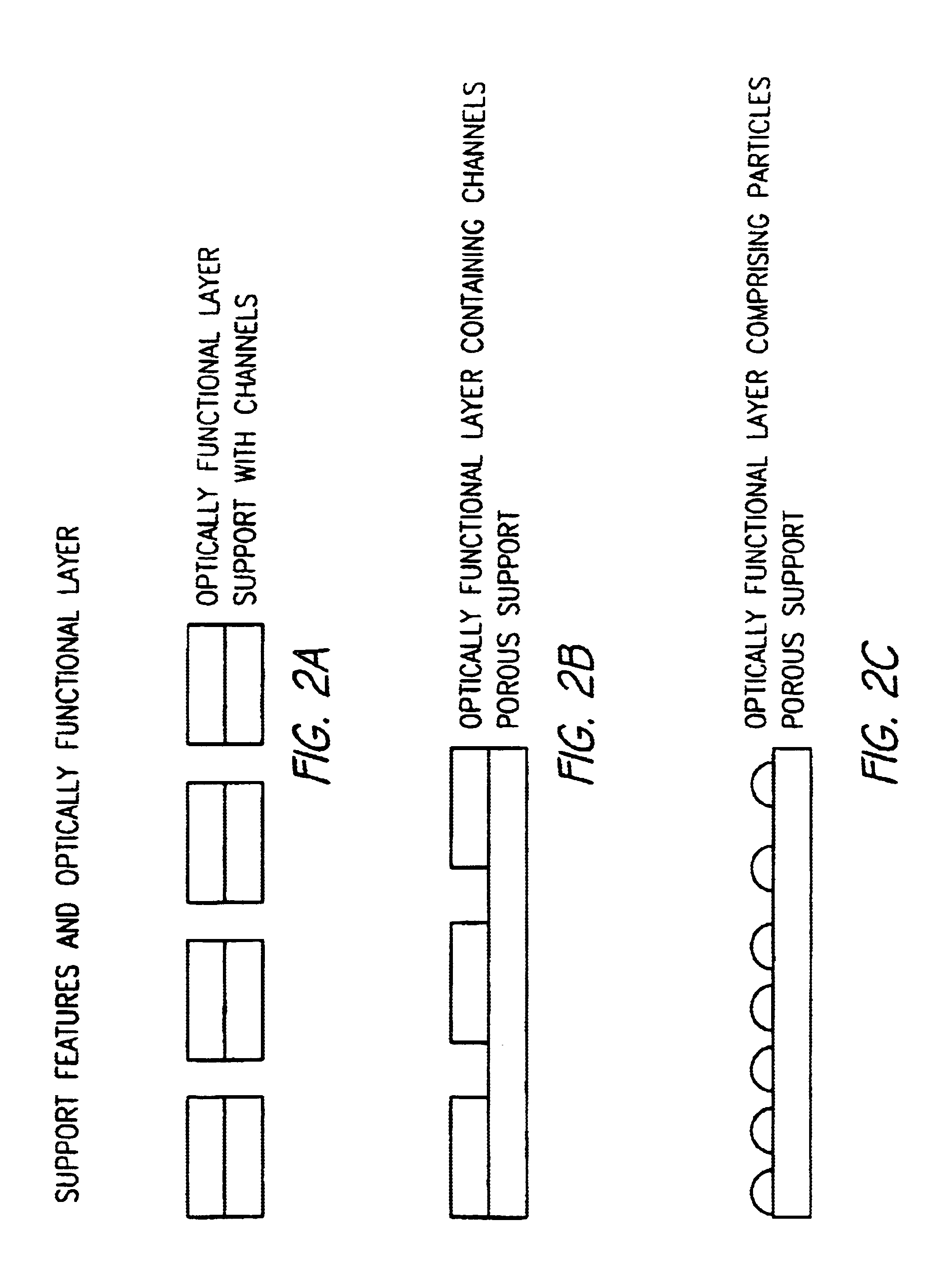Device for mass transport assisted optical assays
a technology of optical assay and mass transport, which is applied in the direction of positive displacement liquid engine, laboratory glassware, instruments, etc., can solve the problems of not offering the desired channel flow characteristics or optical properties, and achieve the effect of reducing the assay performance time, increasing analytical sensitivity, and improving sensitivity
- Summary
- Abstract
- Description
- Claims
- Application Information
AI Technical Summary
Benefits of technology
Problems solved by technology
Method used
Image
Examples
example 1
Use of Absorbent Material to Evaluate Flow Characteristics
[0132]The flow characteristics of the 0.6, 1, and 5 μm channeled-polycarbonate supports show the desired flow characteristics when backed with cellulose acetate or other fibrous or porous wicking material. Flow characteristics of interest are the flow rate through and / or across the surface, the retention of fluid at the optical surface, and uniform flow of sample solution over entire surface. The flow rate should be selected to allow sufficient reaction time assuming that 160 to 1000 μl of sample will be used. Optimal flow and drying of the surfaces are achieved when the hydrophilic channeled supports are backed with a very thin hydrophobic membrane which is backed with another hydrophilic absorbent material to prevent backflow of the sample as the surface dries. The drying step, while not a necessary step in visualization of the optical signal does produce a signal that is more easily assessed due the lower index of air comp...
example 2
Assay Time Reduction Relative to a Non-Channeled Support
[0133]Test surfaces reactive to the polysaccharide antigen specific to group A streptococcus were produced on a non-channeled support (silicon) and a channeled support (polycarbonate). The silicon test device is a commercially available device. The channeled support was a 1 μm channel size polycarbonate which was coated with amorphous silicon followed by silicon nitride and then silylated with DCDMS as in Example 3. Once silylated, the surface was coated with anti-Strep A antibody and modified STREP A OIA® assays were carried out. Antigen was extracted in a 1 minute extraction step. The extraction was neutralized with a reagent which also contains the conjugated anti-Strep A antibody with HRP for precipitation of a solid film forming enzyme product. The complete extraction volume 250 μl (but can be in excess of 300 μl) was applied to the surface of the channeled device. Sample size for the solid non-channeled device is limited ...
example 3
STREP A OIA® Assay Comparision
[0134]A support of polycarbonate with 1 μm channels was coated with a base optical layer of amorphous silicon to a thickness of 2000 Å. The AR layer was silicon nitride coated to a thickness of 420 Å, refractive index is 2.0. The optical layers were applied by ion beam deposition using industry standard parameters. The attachment layer was DCDMS, 2% in 1,1,1-Trichloroethane which was coated onto the essentially support using a vapor deposition method with no catalyst and for 10 minutes at room temperature. Anti-Strep A antibody was applied by solution coating the device for 2 hours at 45° C. in a solution containing 0.1 M HEPES, pH8.0, 6 μg / ml of antibody. The device was rinsed with deionized water and used immediately. The assay of this device used 360 μl of pre-extracted antigen standard+40 μl of conjugate. The mixture was applied to the optical device and differential pressure (vacuum) applied for 2 minutes for each antigen standard and then 2 washes...
PUM
| Property | Measurement | Unit |
|---|---|---|
| Temperature | aaaaa | aaaaa |
| Power | aaaaa | aaaaa |
| Density | aaaaa | aaaaa |
Abstract
Description
Claims
Application Information
 Login to View More
Login to View More - R&D
- Intellectual Property
- Life Sciences
- Materials
- Tech Scout
- Unparalleled Data Quality
- Higher Quality Content
- 60% Fewer Hallucinations
Browse by: Latest US Patents, China's latest patents, Technical Efficacy Thesaurus, Application Domain, Technology Topic, Popular Technical Reports.
© 2025 PatSnap. All rights reserved.Legal|Privacy policy|Modern Slavery Act Transparency Statement|Sitemap|About US| Contact US: help@patsnap.com



